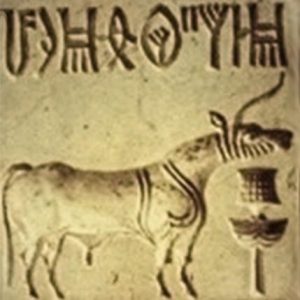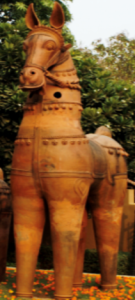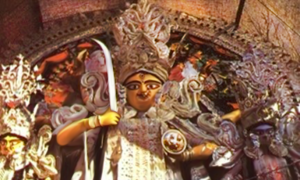Clay is the ancient ceramic material known to man. Clay’s helpful characteristics were discovered by prehistoric people, who used it to make pottery. Clay tablets were the first known writing medium, and some of the earliest pottery fragments date back to roughly 14,000 BC. Clay is a relatively common material.

Harappan clay work
- 300-100 BCE (Maurya and Sunga Periods): Clay dolls from unearthings at Pataliputra, the ancient Mauryan capital, Kosambi, Gaya and other important sites of the Mauryan and Gupta Periods are found
- 100 BCE-300 CE (Kushan Period): In the north-western region of India, the Greco-Buddhist stupas were often decorated with stucco designs and motifs
- There are a few Gandharan heads with proof of paint
- Solid red mineral tones were utilised for the lips and dark charcoal shades for tangled locks and curly hair
- 300-1000 (Gupta and Post Gupta Periods): Life-size terracotta sculptures were used to decorate temples and secular buildings
- 1600-1800: Some temples were built in unique style by the local rulers at Bishnupur in West Bengal were extensively decorated with terracotta plaques and stucco patterns
- 1900-2000: Every village, town and city in India has a dynamic living custom of ceramics that is unique to its tradition
Making of Giant figures
To make monster figures, craftsmen have developed different strategies. One of them is to make the giant figure pieces on the potter’s wheel. This is to keep the mud doll from breaking when it is terminated in the oven.
- At the point when dirt is terminated, it contracts impressively inferable from the deficiency of water and dampness
- A strong model made of conventional dirt would blast under the tension of the hotness of the oven
- Making walls of even thickness is a unique way of overcoming this problem
- The potter tosses dirt to make the empty states of legs, body, and neck of the figure
- Individually collected pieces by Potter were get-together to create the desired form. This is to keep the mud doll from breaking when it is terminated in the oven
- The four pot-formed legs are appended to the empty middle. To this the artist adds bits of pinched, pressed, and coiled clay for decoration
- Some of these votive figures can be two metres high and their towering presence only adds to the genius of the village potter
Giant Clay Figures of India
- Madhya Pradesh and Chhattisgarh: On amavasya of Bhadrapad, (August to September), in Bastar tribals provide terracotta bulls, elephants, tigers and horses to the goddess for prosperity, well-being
- These clay animal gifts have replaced the practice of animal sacrifices
- Tamil Nadu: The enthusiastic great size image of Aiyanar, the local heavenliness, is encircled by a sea of attendants, horses, and bulls. They serve as gram devatas who remain at the entry of the village and protect it

Aiyanar Horse
- West Bengal: During Durga Puja, enormous figures of the Goddess are created. Ornately decorated clay of horses and huge armies with terracotta figures and gathering of village deities with their attendants can be seen under the trees in villages

Clay figurine, West Bengal
Pottery, more than any other relic, reveals how ancient humans interacted with their surroundings and one another. Each new portrayal of a scenario from that life is crucial in our endeavour to recreate the life of the past, either in validating our current knowledge or in augmenting it with new facts.
Conclusion
Pottery is one of our oldest crafts. Water was most likely conveyed in prehistoric times in woven baskets coated with river clay. The clay layer dried when the water was emptied out of the container. The form shrank and separated from the basket’s sides as a result of the loss of moisture. The basket design was kept when the clay, now formed like a pot, was removed and dried in the sun on hot sand. Early men and women learned that by hardening moulded pottery in hot ashes, they could create durable containers for transporting and storing food.
 Profile
Profile Settings
Settings Refer your friends
Refer your friends Sign out
Sign out













